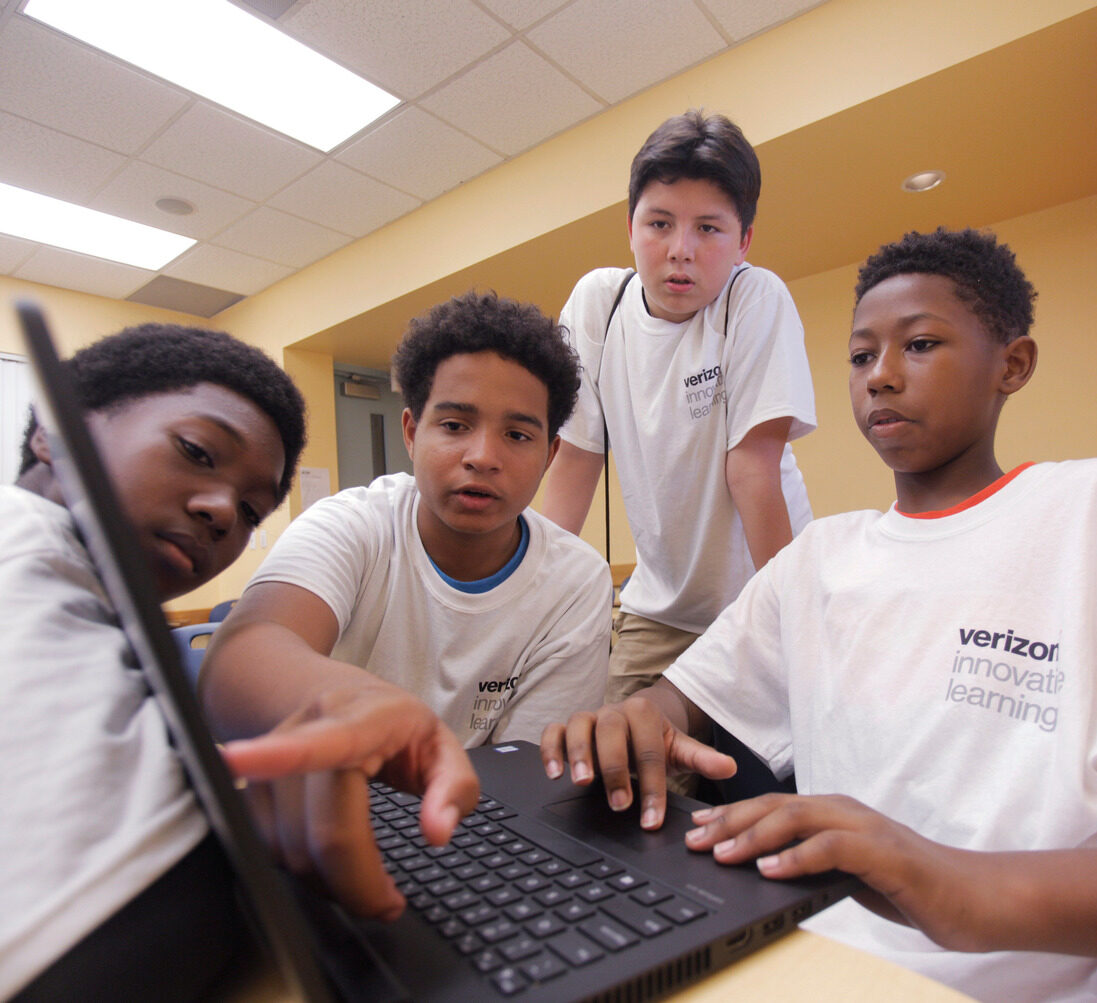Districts and schools work hard to ensure every student has what they need to thrive – and that includes access to technology. We supercharge those efforts.
Over the last decade, Verizon Innovative Learning has transformed the learning experience for more than 3 million students by providing schools and districts with the tools they need to thrive in the digital world and bridge the digital divide.
Our program, Verizon Innovative Learning Schools, works side-by-side with schools and districts to get internet-connected devices into the hands of students and to enhance how teachers use technology in the classroom.
Technology has the power to engage students in dynamic, exciting learning. Through dedicated coaches, professional development, and community-building, we help teachers harness that power.
Schools receive devices with internet access for all students to use at school, at home, and everywhere in between.
Job-embedded coaching, live and on-demand learning opportunities, and customized support help teachers and leaders reach their goals.
Our experienced team works with a diverse network of participating schools and districts, offering space for collaboration, problem solving, and inspiration.
The Verizon Innovative Learning Schools program is so much more than a technology initiative. It helps participating schools and districts spark a teaching and learning transformation.
Technology becomes a mechanism for deep instructional change where students and teachers learn from one another and experiment with new ways of understanding content, applying it to real-world scenarios, and demonstrating knowledge. Your school becomes a community of collaboration and powerful learning that embraces change.
By bringing our combined strengths to the Verizon Innovative Learning Schools program, Verizon and Digital Promise aim to increase digital equity and support students, teachers, and schools in unlocking the potential of technology to transform teaching and learning.
Verizon Innovative Learning Schools is part of Verizon’s longstanding commitment to providing technology access and tools to help millions of students thrive.

The Verizon Innovative Learning Schools program supports:
Since inception, Verizon has committed more than $1 billion in market value toward devices, connectivity, and helping communities close the digital divide.
Let's connect and we'll send you the latest from Digital Promise.